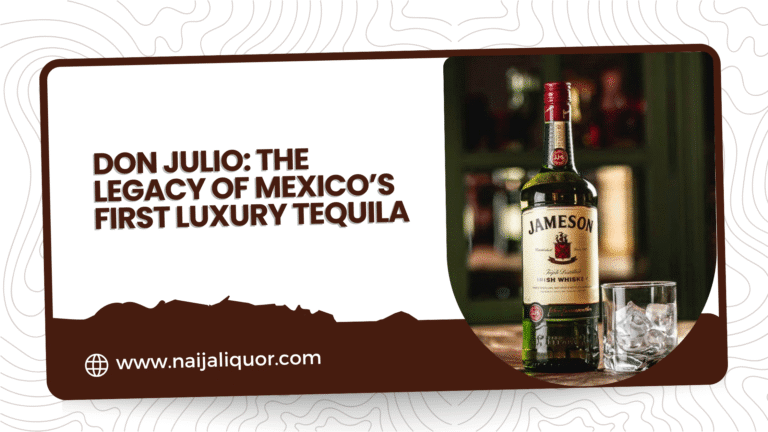Enjoy free delivery within Lagos on orders from ₦500,000 and above
![Wine Corks Are Not Indicators of Fake Products [by Kelechi Deca] | Naija Liquor Wine Corks Are Not Indicators of Fake Products](https://naijaliquor.com/wp-content/uploads/2024/08/Wine-Corks-Are-Not-Indicators-of-Fake-Products.png)
Years ago, I was almost intimidated by someone who thought he knew better, and was so loquacious and forceful about it that I was forced into my shell like a disoriented Tortoise. It had to do with the role of wine corks, and if the type of cork used as a stopper tells whether the wine is of good quality or “Akuruaku” Sango Ota.
This is not denying the fact that many of the fakes we have in the markets have plastic stoppers and screws because natural cork is more expensive and requires a more rigorous process. But a well packaged wine with cool natural cork can still be “Sapele Water that went to Harvard.”
Interestingly, two years before that encounter, I was in Bali Indonesia and there was a wine event where the host took time to educate the audience about the latest developments in the winery industry, and took time to bust some myths, the cork assumption being one.
But I chose to suffer in silence, keeping quiet over something I know and obliging the floor to the loud fellow just to avoid unnecessary altercations. I do that a lot especially here. Inability to respond against certain confrontations is my way of keeping sane in an obviously crazy society.
I know that many believe that particular cork types used as wine stoppers (covers) shows that a bottle of wine is original, cheap or fake, but that is not factually true. This is because these days there are alternative wine stoppers to natural cork: micro-agglomerate cork, screw cap and the silicone cork.
What basically determines what type of wine cork to be used is the age of the wine to be corked, and cost. Most aging wine makers prefer natural corks because they expand, and contract with the bottle, keeping the seal between wine and air consistently in the right conditions.
If the wine is just a year or two before consumption, then a plastic or synthetic cork with a life span of about two years would be used.
But for wines that would last longer, different types of natural corks would be used. If you are observant, you would notice that the corks for 5-10 years wines are different from those for 5-15 years, and also for 10- 20 years and above.
-
![Wine Corks Are Not Indicators of Fake Products [by Kelechi Deca] | Naija Liquor Jameson Irish Whiskey 4.5l](https://naijaliquor.com/wp-content/uploads/2024/03/Jameson-Irish-Whiskey-Whiskey-4.5l-430x430.png) Jameson Irish Whiskey | Whiskey | 4.5l₦174,000.00
Jameson Irish Whiskey | Whiskey | 4.5l₦174,000.00
Caveat
There is very important information that wine buyers should pay attention to, especially for wines with natural corks. Always inspect the gap between the cork and the wine in an unopened bottle, it is called ullage.
Ordinarily, the ullage of a good bottle of wine should be about a quarter to half an inch. But if the gap is wider say up to an inch or more, then that wine has been evaporating because the cork is faulty. If you see a bottle of wine with very wide ullage, especially for younger wines less than 10 years, do not buy. It is signs of improper storage.
Now let us explore different types of wine corks, their advantages, and disadvantages.
This is the most popular of all wine stoppers, and it has lots of advantages over the others. Natural corks are natural because they have very low environmental impact, they absorb carbon dioxide preventing its release into the environment, even as they help the wines to get required oxygen.
Another important aspect of natural corks is that because they are made from certain trees with medicinal properties, they gradually transfer polyphenols in the cork wood which allows for the wine to evolve in the bottle and even establish its color.
This is similar to why wines and some spirits are stored in barrels from Oak trees which filter oxygen, adding flavours and antioxidants to the wines. Most spirits get more of the health benefits from the type of woods their storage barrels were made from.
However, natural cork does have some disadvantages too, chief being the issue of smell which is as a result of a fungus, that is usually transferred to the stopper. And even in very small amounts, these parasites can influence the taste of a wine in the bottle. A very large amount of this parasite may damage the taste and it is advisable not to consume such tainted wine.
We have different types of Corks, and we also have screws that in the last few years have made things easier for people as we all know how wine openers like to develop legs, and run away whenever they’re mostly needed. So screws seem to have come to a great help.
-
![Wine Corks Are Not Indicators of Fake Products [by Kelechi Deca] | Naija Liquor Jim Beam Honey](https://naijaliquor.com/wp-content/uploads/2024/06/Jim-Beam-Honey-430x430.png) Jim Beam Honey | Whiskey | 70cl₦8,000.00
Jim Beam Honey | Whiskey | 70cl₦8,000.00
Cork possesses characteristics that have deemed it the most appropriate material for the conservation of wine over the years. It is flexible, it does not absorb liquid, and its micropores allow for equally micro oxidation of the wine.
Synthetic stoppers have some advantages over natural corks in that they are cheaper even where the wine is not cheap. They cannot develop fungi and pathogens, and they do not give the foul smell natural corks give sometimes, moreso, they do not crumble and have insulating properties.
Synthetic corks are not porous which means that they do not let oxygen in. This is basically why wine makers hardly use it for aging wines as oxidation is a process of aging. So they use it more for wines that are meant to be drunk young.
If you pay attention, you’d see some wines with the traditional beer cover thus need a beer bottle opener too. Some wine producers use it for specific types of wines, especially those that need to be re-fermented in the bottle.
One great advantage natural corks have is the psychological feel it brings from the ritual of opening the wine bottle, the expectations of those around the table whose brains release hormones leading to Pavlovian anticipations.
If you find this confusing, and wouldn’t want to invest good money to purchase Sango Ota water instead of premium, the guys at Naija Liquor can help take you. It is not just about your money, but your health also. Especially in this Bulabanomics era.


![Wine Corks Are Not Indicators of Fake Products [by Kelechi Deca] | Naija Liquor Chivas 25 Year Old](https://naijaliquor.com/wp-content/uploads/2024/04/Chivas-Regal-25-Years-430x430.png)






